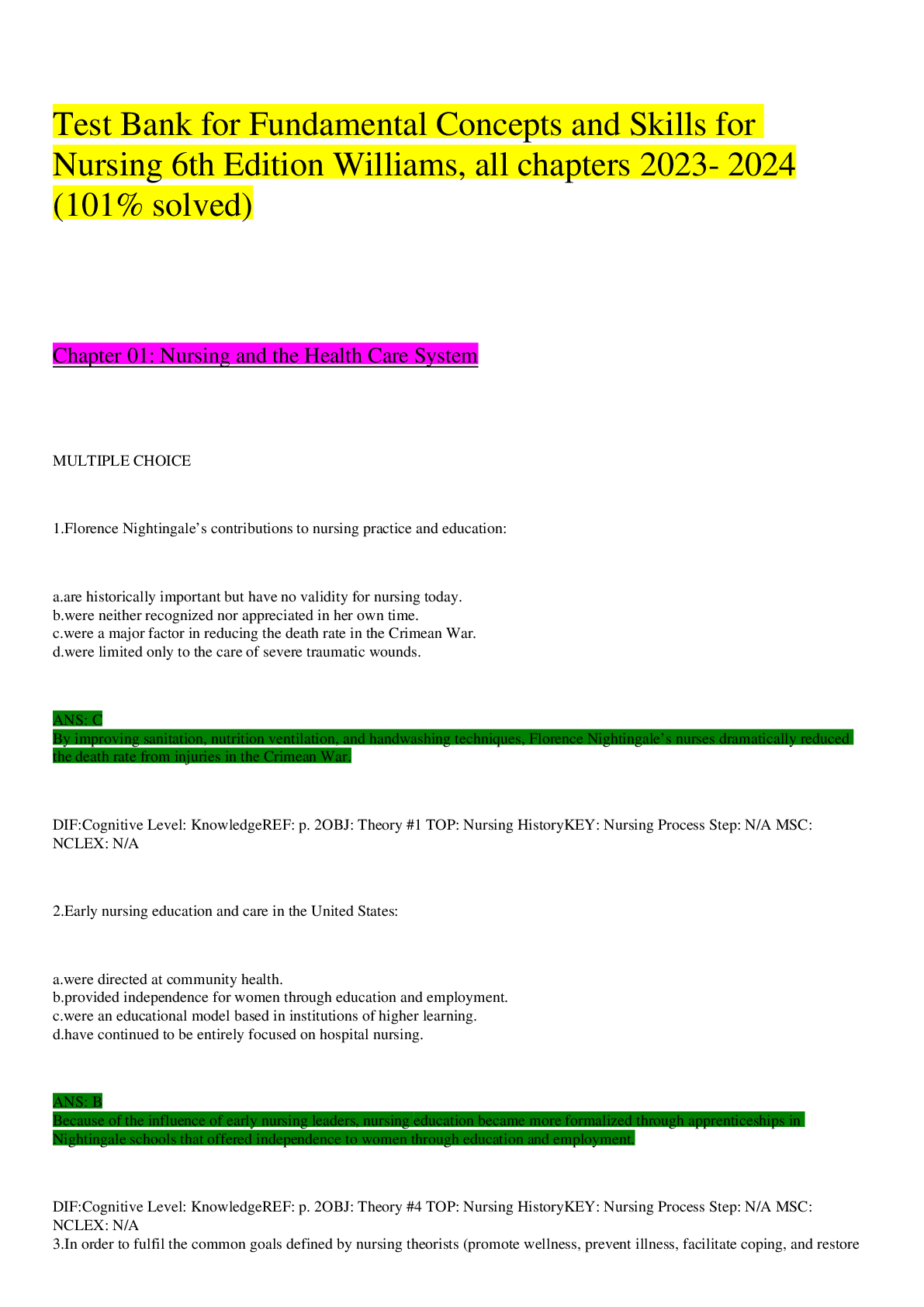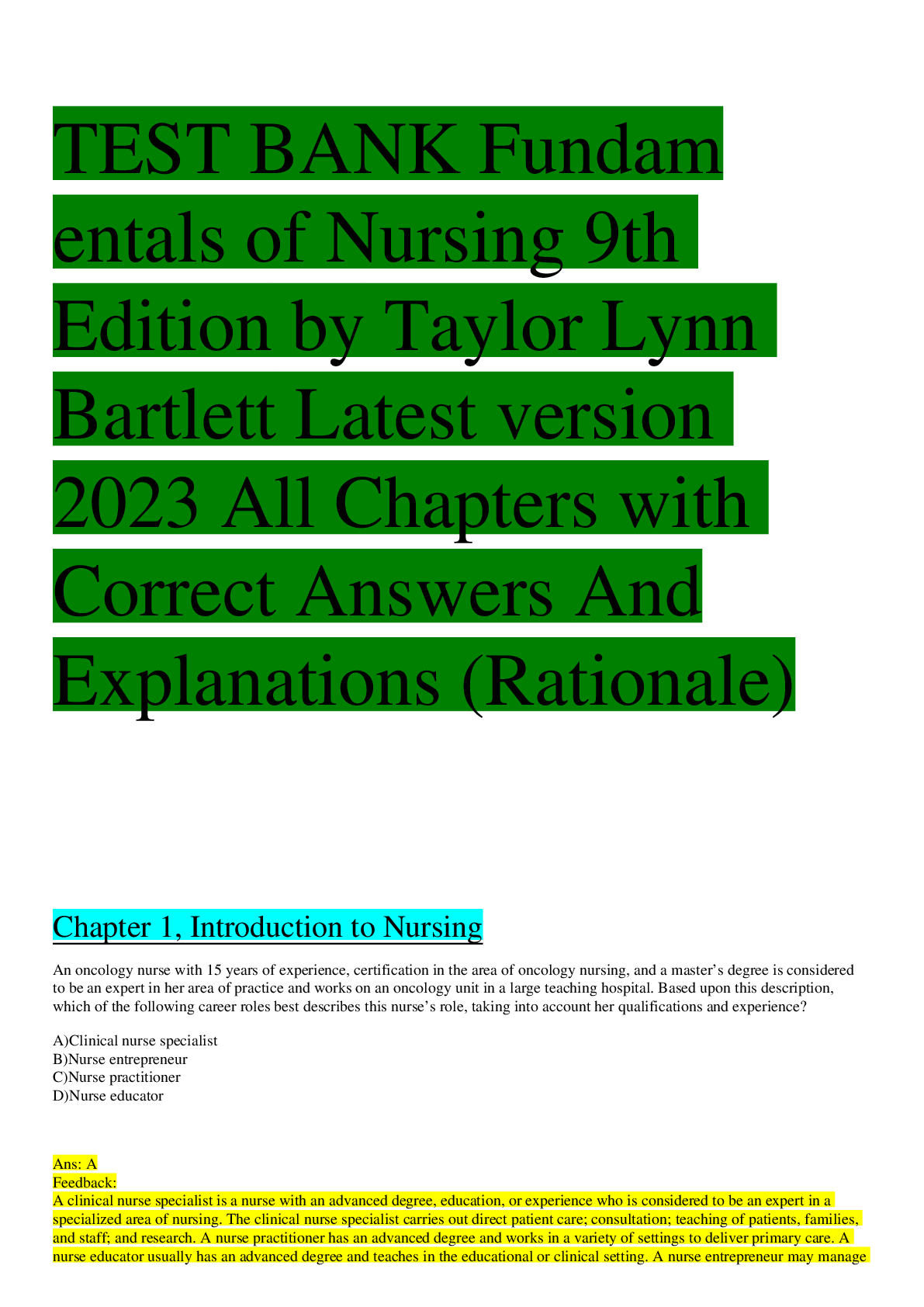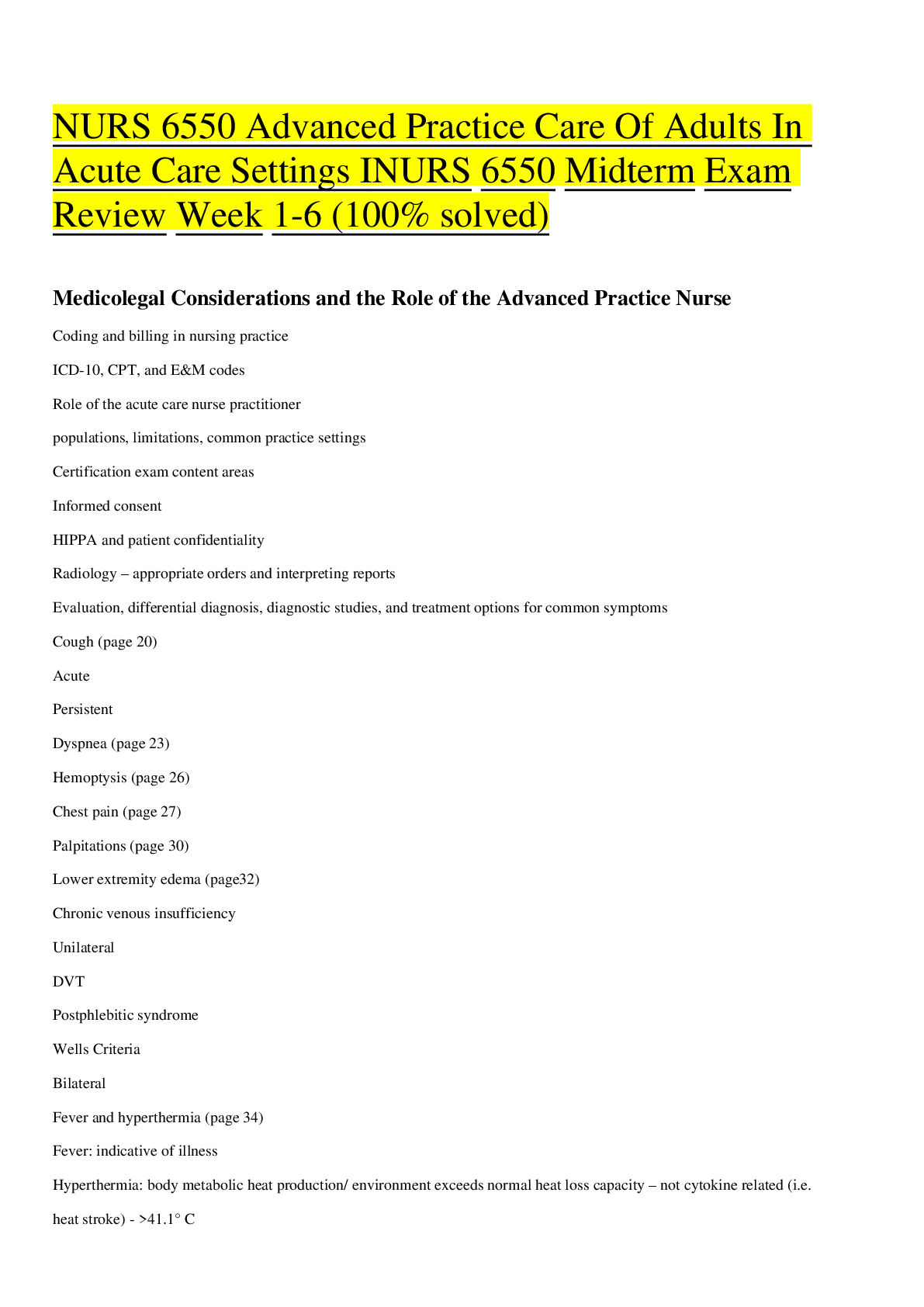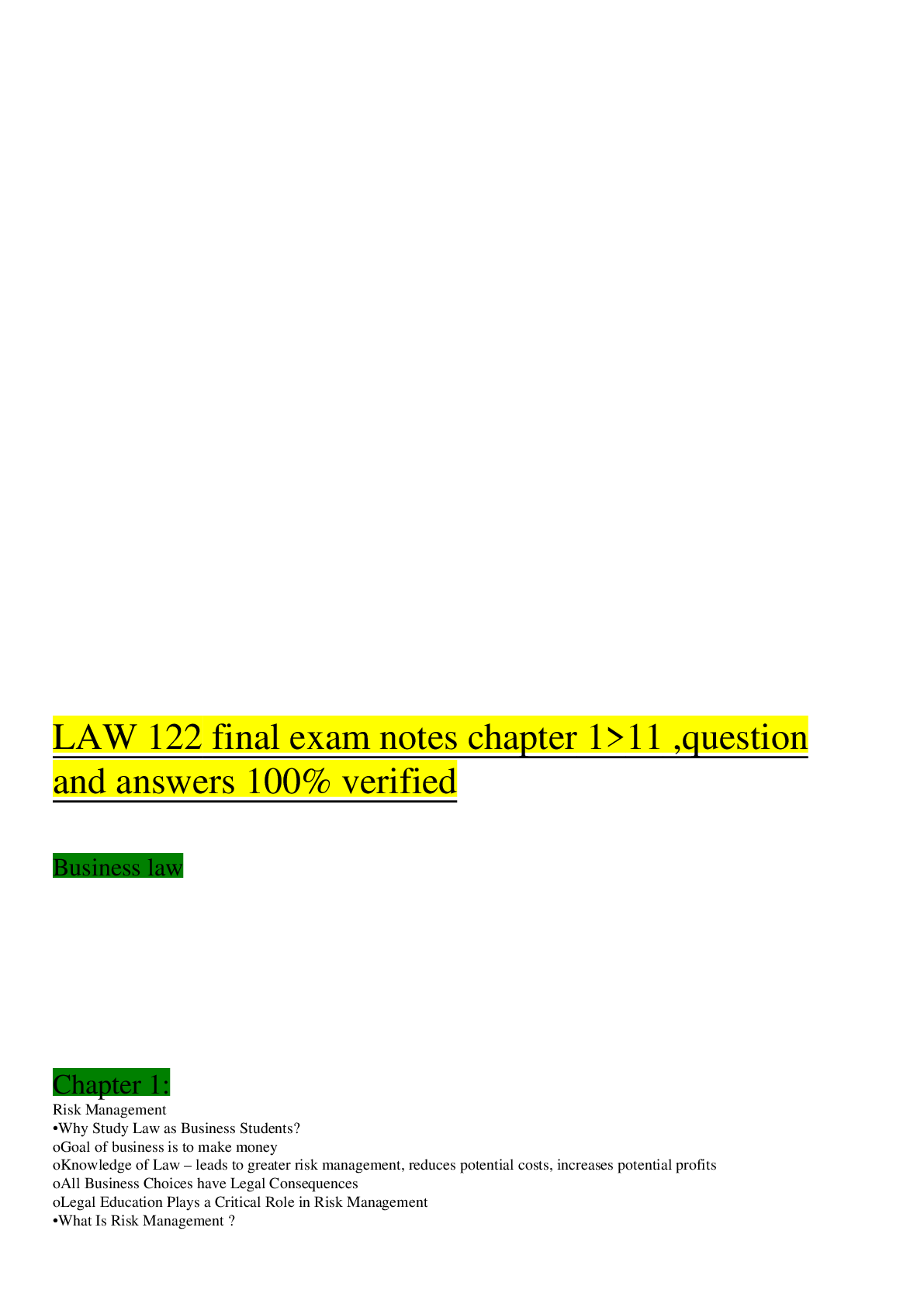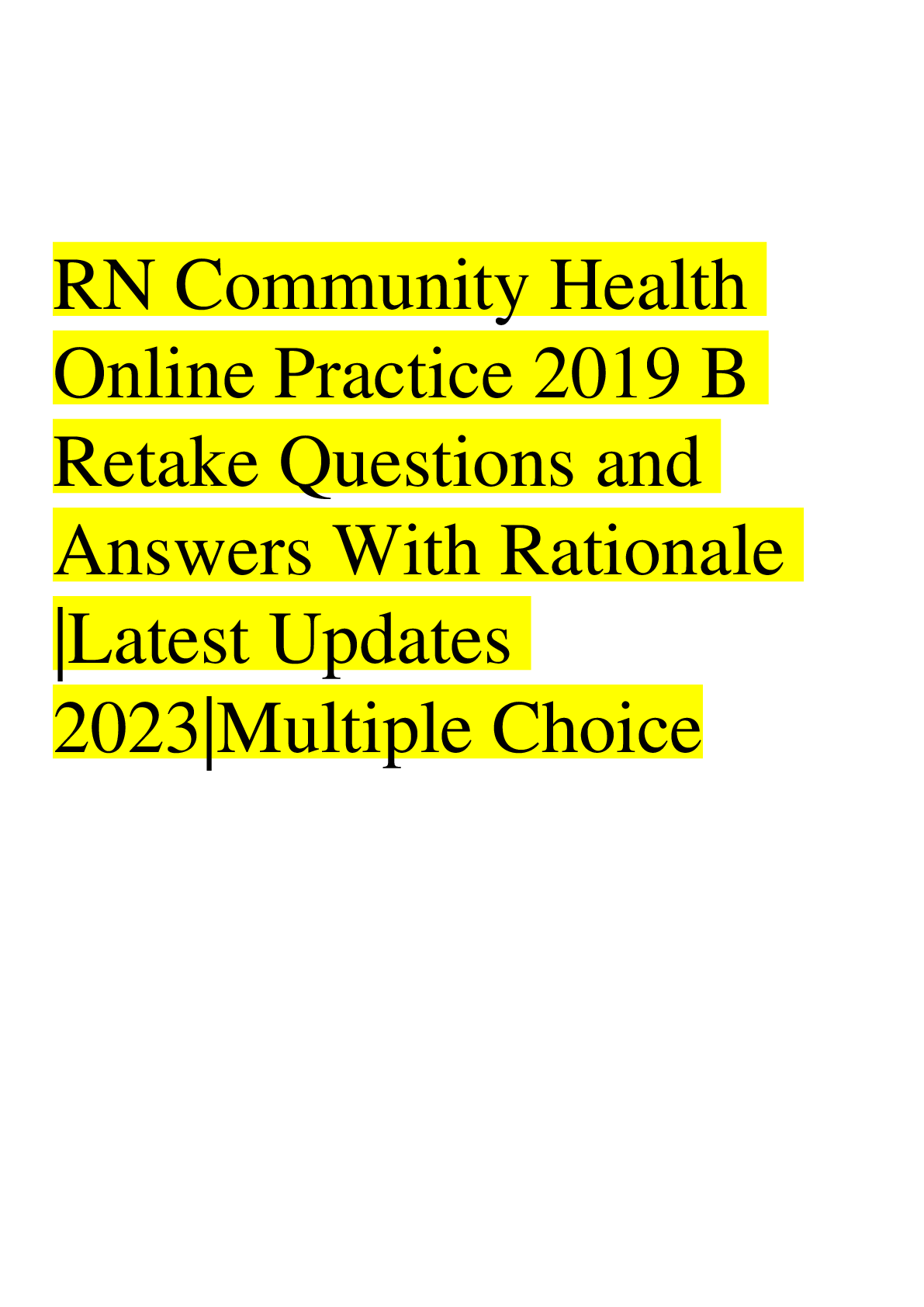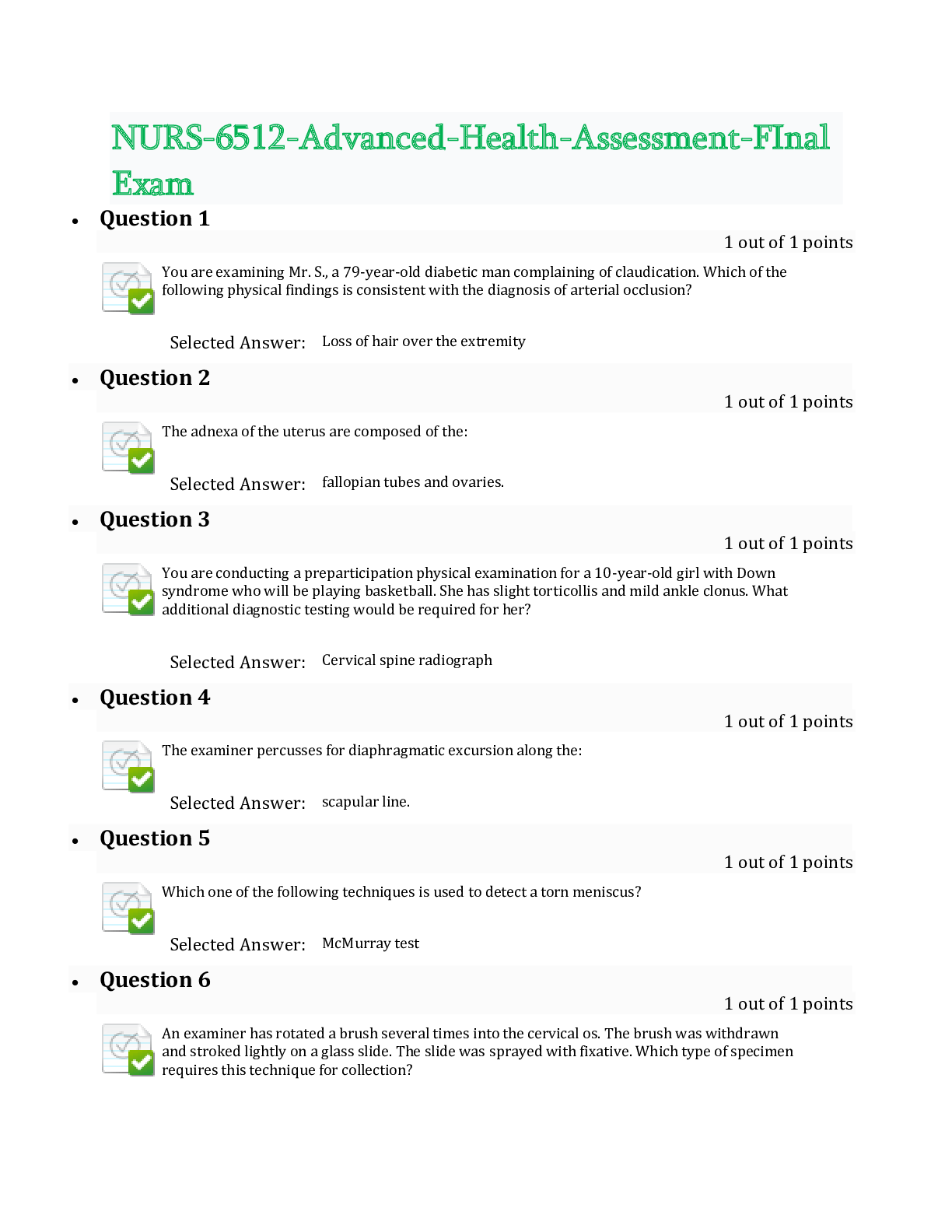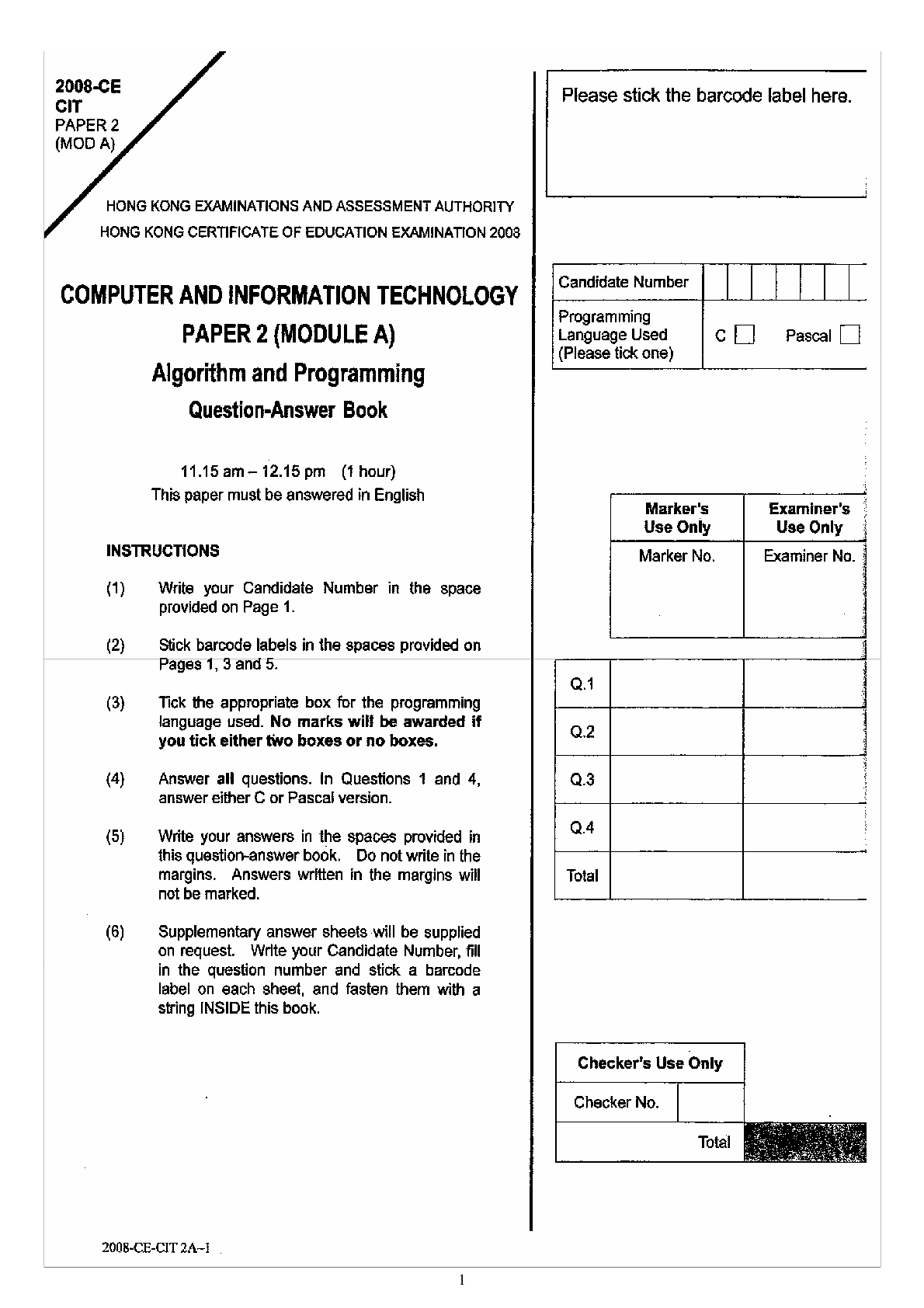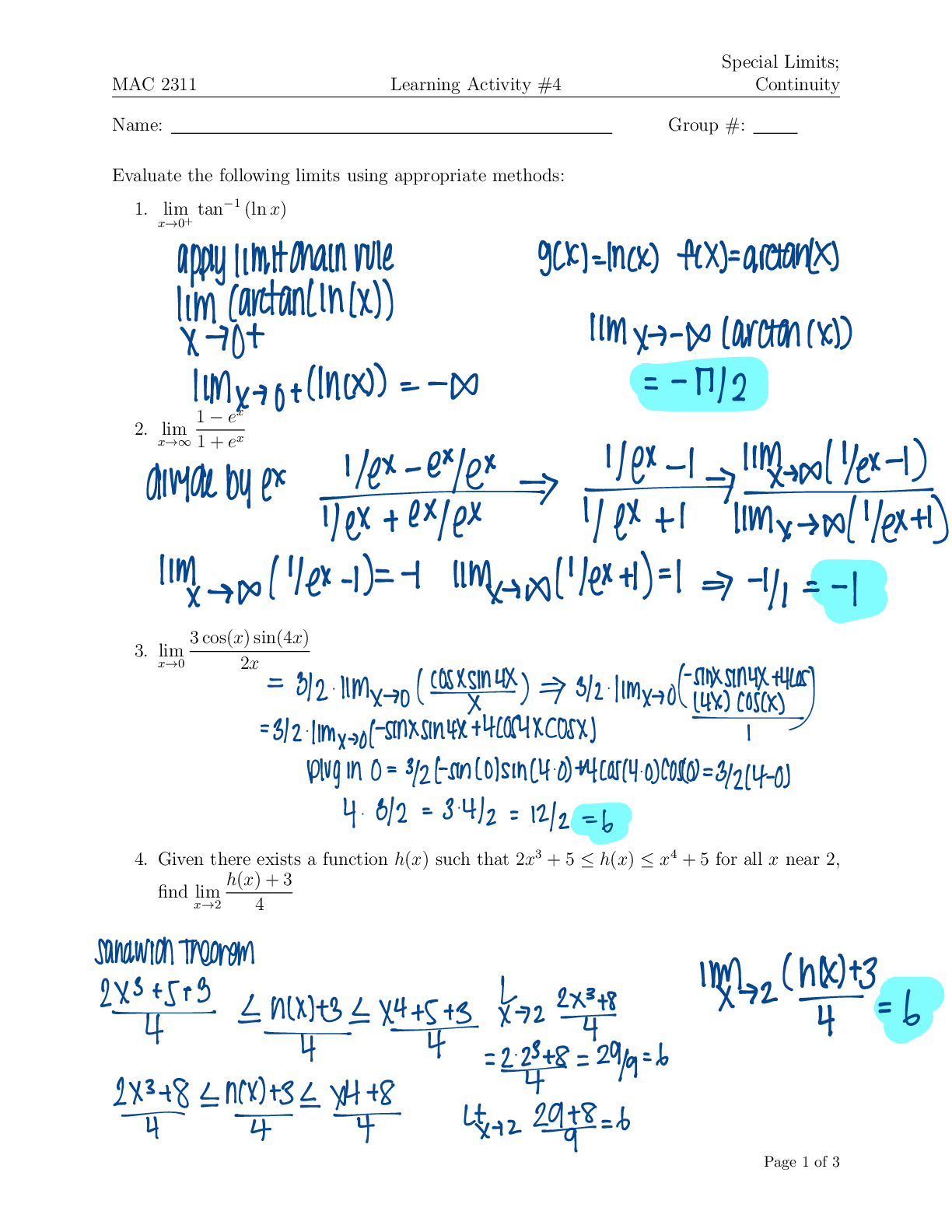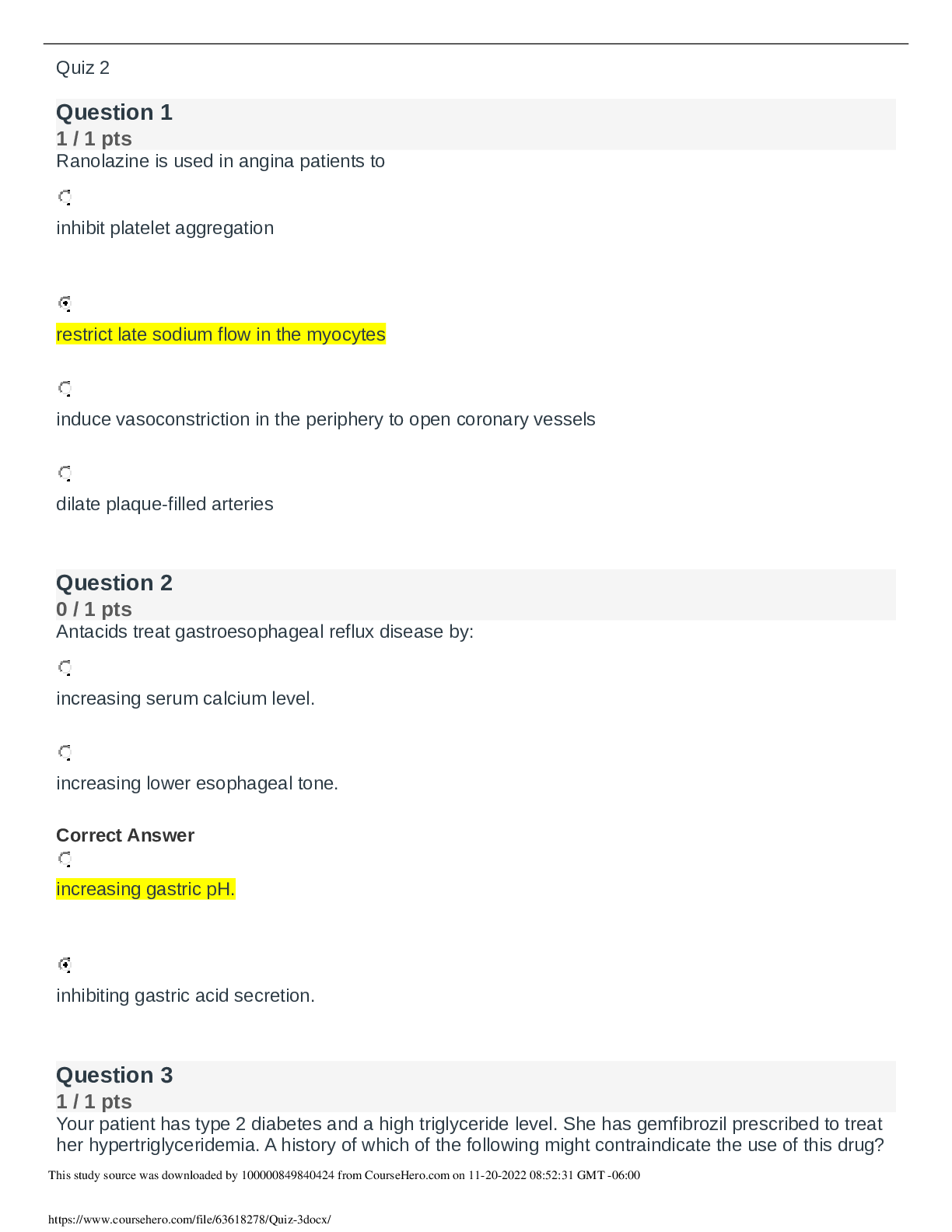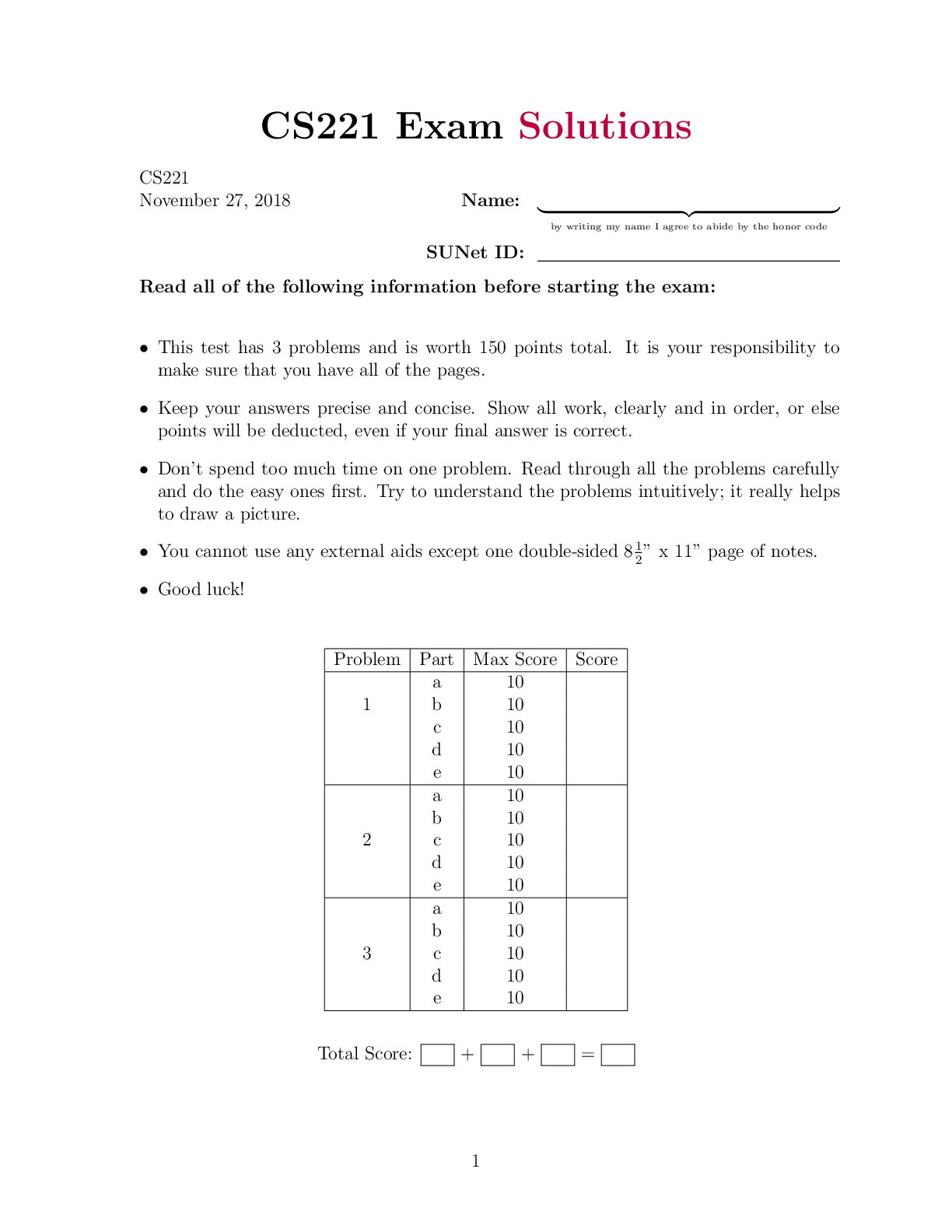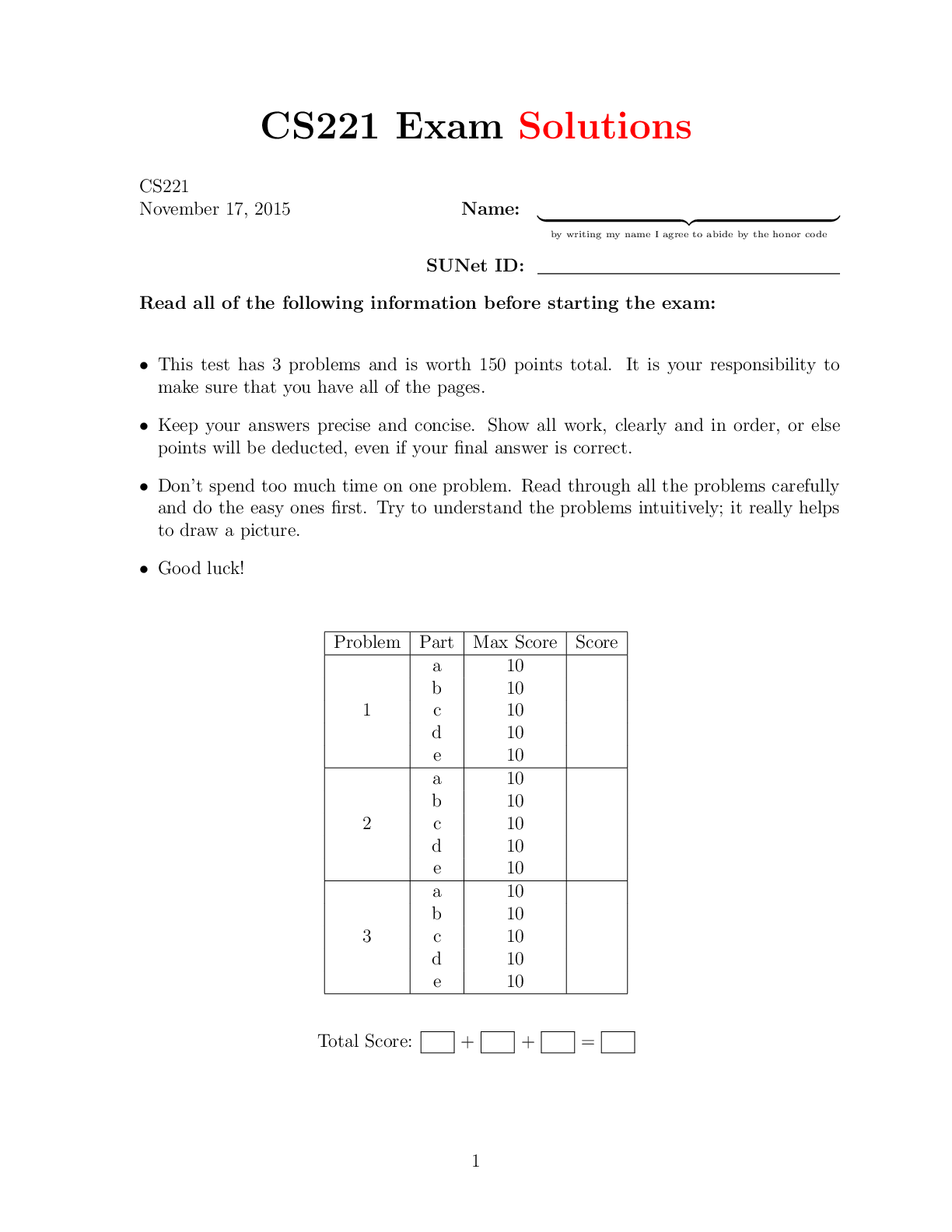Health Care > EXAM > Test Bank -Pediatric Nursing The Critical Components of Nursing Care 2nd Edition Rudd (all chapters (All)
Test Bank -Pediatric Nursing The Critical Components of Nursing Care 2nd Edition Rudd (all chapters questions and answers 101 % correct )
Document Content and Description Below
Test Bank -Pediatric Nursing The Critical Components of Nursing Care 2nd Edition Rudd (all chapters questions and answers 101 % correct ) Chapter 1-22 1.issues and trends in pediatric nur... sing 2.Standards of practice and ethical considerations 3.Family dynamic and communicating with children and families 4.Cultural,Spiritual and Enviromental influence on the child 5.End of life care 6.Growth and Development 7.Newborns and Infants 8.From Toddlers to Preschoolers 9.School-age children 10.Adolescents 11.Respiratory disorders 12.Cardiovascular Disorders 13.Neurological and sensory disorders 14.Mental Health disorders 15. Gastrointestinal disorders 16.Renal disorders 17.Endocrine disorders 18.Reproductive and Genetic disorders 19.Hematologic,Immunologic and Neoplastic disorders 20.Musculoskeletal disorders 21.Dermatologic disorders 22.Communicable diseases Chapter 1. Issues and Trends in Pediatric Nursing MULTIPLE CHOICE 1. A nurse is reviewing changes in healthcare delivery and funding for pediatric populations. Which current trend in the pediatric setting should the nurse expect to find? a. Increased hospitalization of children b. Decreased number of uninsured children c. An increase in ambulatory care d. Decreased use of managed care ANS: C One effect of managed care is that pediatric healthcare delivery has shifted dramatically from the acute care setting to the ambulatory setting. The number of hospital beds being used has decreased as more care is provided in outpatient and home settings. The number of uninsured children in the United States continues to grow. One of the biggest changes in healthcare has been the growth of managed care. DIF: Cognitive Level: Comprehension REF: p. 3 OBJ: Nursing Process Step: Planning MSC: Safe and Effective Care Environment 2. A nurse is referring a low-income family with three children under the age of 5 years to a program that assists with supplemental food supplies. Which program should the nurse refer this family to? a. Medicaid b. Medicare c. Early and Periodic Screening, Diagnostic, and Treatment (EPSDT) program d. Women, Infants, and Children (WIC) program ANS: D WIC is a federal program that provides supplemental food supplies to low-income women who are pregnant or breast-feeding and to their children until the age of 5 years. Medicaid and the Medicaid Early and Periodic Screening, Diagnostic, and Treatment (EPSDT) program provides for well-child examinations and related treatment of medical problems. Children in the WIC program are often referred for immunizations, but that is not the primary focus of the program. Public Law 99-457 provides financial incentives to states to establish comprehensive early intervention services for infants and toddlers with, or at risk for, developmental disabilities. Medicare is the program for Senior Citizens. DIF: Cognitive Level: Application REF: p. 7 OBJ: Nursing Process Step: Implementation MSC: Health Promotion and Maintenance 3. In most states, adolescents who are not emancipated minors must have parental permission before: a. treatment for drug abuse. b. treatment for sexually transmitted diseases (STDs). c. obtaining birth control. d. surgery. ANS: D An emancipated minor is a minor child who has the legal competence of an adult. Legal counsel may be consulted to verify the status of the emancipated minor for consent purposes. Most states allow minors to obtain treatment for drug or alcohol abuse and STDs and allow access to birth control without parental consent. DIF: Cognitive Level: Application REF: p. 12 OBJ: Nursing Process Step: Planning MSC: Safe and Effective Care Environment 4. A nurse is completing a clinical pathway for a child admitted to the hospital with pneumonia. Which characteristic of a clinical pathway is correct? a. Developed and implemented by nurses b. Used primarily in the pediatric setting c. Specific time lines for sequencing interventions d. One of the steps in the nursing process [Show More]
Last updated: 1 year ago
Preview 1 out of 249 pages
Instant download

Buy this document to get the full access instantly
Instant Download Access after purchase
Add to cartInstant download
Reviews( 0 )
Document information
Connected school, study & course
About the document
Uploaded On
Feb 17, 2023
Number of pages
249
Written in
Additional information
This document has been written for:
Uploaded
Feb 17, 2023
Downloads
0
Views
63

